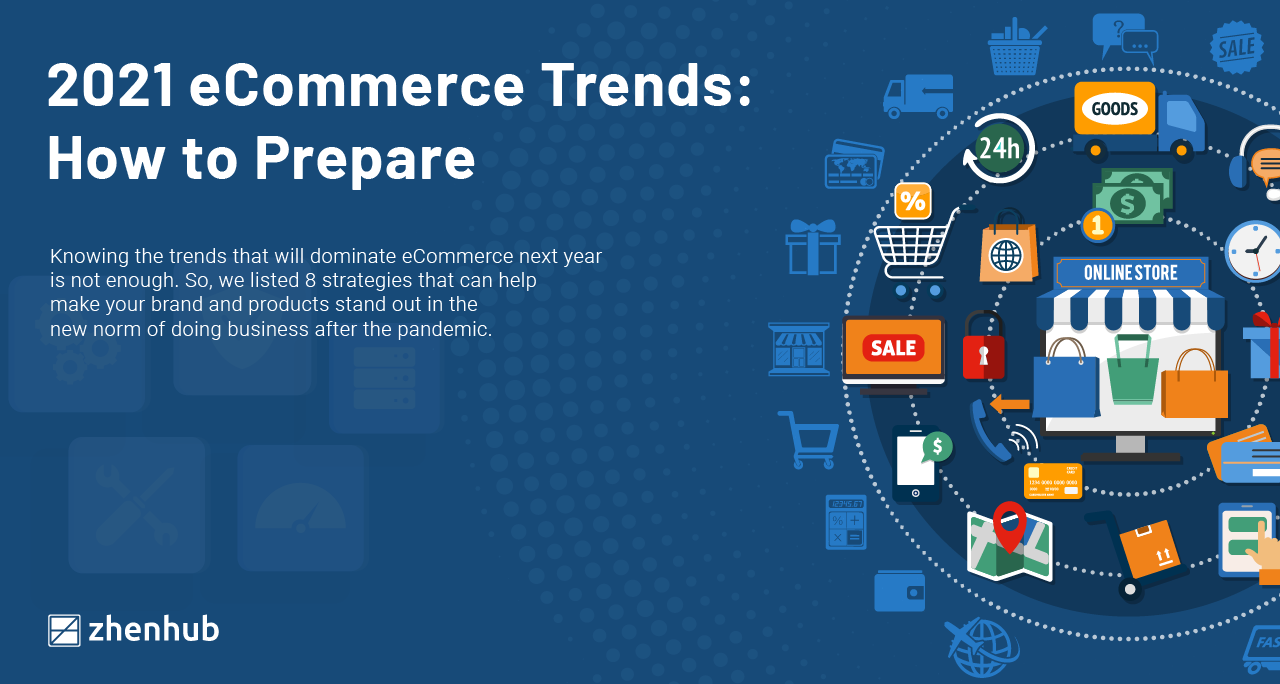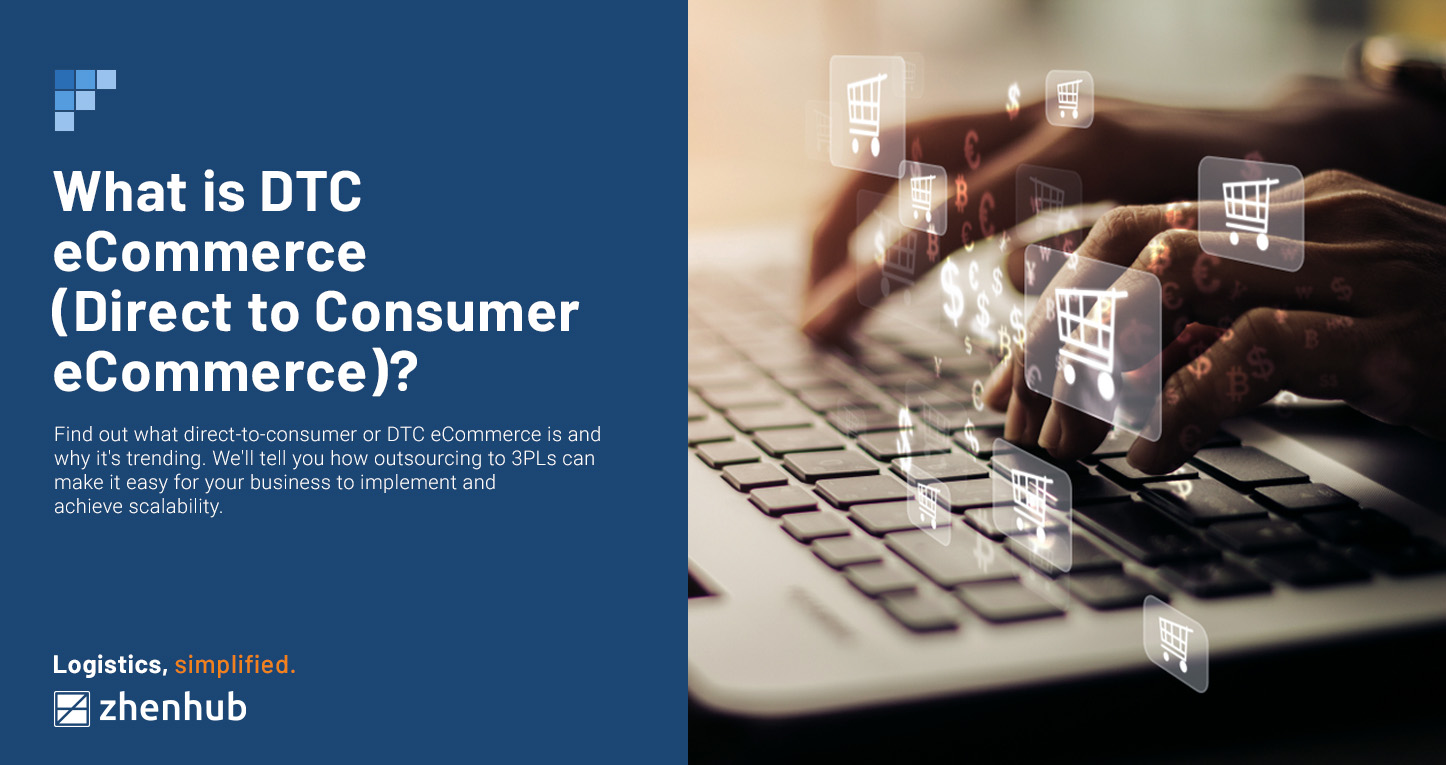
2021 eCommerce Trends: How to Prepare
Time to read: 5 minutes
2021 eCommerce Trends: How to Prepare
Historians and experts prefer to describe 2020 as the Great Disruptor. This year came with the COVID-19 pandemic, an unexpected catalyst that shattered the ways economies and governments normally do business. And it did so at such an incredibly fast rate, making 2021 eCommerce trends seem like a forecast for a decade from now.
It’s not an exaggeration. In fact, in its US Retail Index data, IBM claimed that the ongoing global health crisis has actually accelerated the digitalization of industries and markets around the world by five years. What’s more? McKinsey & Company found out that many of these digital transformations could stick around for the long haul.
This realization requires eCommerce players to adapt strategies and policies to make their brand and products stand out in the new norm of doing business. Aside from catching up with the ever-evolving consumer behavior, retailers also need to ride these eight 2021 eCommerce trends to stay competitive in a post-pandemic world.
• The Omnichannel Approach will be the norm
As shopping continues to be more digital next year, the list of 2021 eCommerce trends will not be without the omnichannel marketing strategy. An omnichannel approach refers to a retail strategy designed to give consumers a cohesive shopping experience across multiple online touchpoints. Identifying where the buying market spends time online is key to executing a successful omnichannel initiative, which should meet every possible shopping preference of their target audience.
For consumers, this means being able to discover, consider, and transact with merchants on many other platforms than just on their websites. While developing social media and other digital platforms to meet this demand may seem like a costly venture, sellers will find it very advantageous in the long run. Research done by Cybra revealed that businesses with omnichannel initiatives can retain an average of 89% of their customers. Those without, the study highlighted, stand to keep only 33%.
• Mobile Commerce will dominate
Mobile commerce is looking at a rosy growth forecast for 2021. Based on a study by Statista.com, m-commerce will contribute 72.9% of all eCommerce sales worldwide next year. It’s telling retailers one thing clearly: That brands should exert extra effort to optimize their online stores for mobile users.
But how does a business get mobile-friendly exactly? Think of apps and social platforms that make online transactions easy. Websites should also be mobile-responsive, which means that it should be able to provide a seamless checkout process regardless of however small the screen they are being accessed on as their desktop counterparts.
• Voice Search Commerce will rise
The rise of voice search is an innovation that retailers can no longer ignore. If Loup Ventures is correct, 75% of US households will have some sort of smart speaker by 2025, which will open up another avenue for eCommerce penetration.
So, how can business owners prepare for one of the 2021 eCommerce trends? The simplest way is through content. By identifying consumer questions commonly asked during the early stages of the buyer’s journey, brands can optimize content by offering voice-based navigation on their online store. The key strategy of voice search optimization is by focusing on long-tail phrases. People who use voice assistants often make use of natural language, which is more conversational in manner. Another simple way retailers can optimize for voice search is through publishing an FAQ page that is concise and scannable.
• Personalization will win the market
Personalization is grounded on two primary market needs: convenience and relevance. This clearly explains why, according to a 2016 Accenture study, 83% of consumers are willing to share valuable information in exchange for more personalized content.
Retailers who can present the exact content consumers want precisely the moment they want it are likely to enjoy higher conversion rates than those who rely on random guesswork. Research on eCommerce statistics published by My Total Retail in February 2020 reveals that implementing on-site features like “product recommendations” and “search together” can help merchants improve conversion rates by 3.7 times.
• Augmented Reality will have great demand
Containing the pandemic has forced governments to enforce public safety measures of physical distancing, resulting in the rise of contactless shopping this year. But just because more people are shopping online doesn’t necessarily mean that all of them are actually checking out. Not being able to feel or experience is one of the top reasons why online shoppers abandon their carts.
This has forced eCommerce players to be creative, tapping the latest available technologies in recreating in-store experiences like fitting rooms through virtual try-ons. These and other innovations empower shoppers, who are in the consideration stage of their purchase journey. Shopify said that sellers who employ virtual try-ons can result in 94% higher conversion rates than those who don’t.
• New Payment Methods will be available
The lack of available payment options is one of the top ten reasons shoppers do not check out. In addition to the common payment channels such as debit and credit card, offering digital wallet payments can be the push sellers need for eCommerce conversion rate optimization. Paypal, Apple Pay, Samsung Pay, and Amazon Pay are just some of the more modern payment methods consumers are beginning to utilize.
• Fulfillment will be more digitized
With eCommerce poised to overtake traditional retail by 2021, the demand for efficient order fulfillment is inevitable. Transparency in orders and shipments will remain a priority for both retailers and consumers, making fulfillment software or mobile apps a necessity rather than a luxury.
Thankfully, emerging tech in fulfillment and warehousing makes it easy for retailers to meet customer demand for expedited shipping and trackability. Merchants should be smart in choosing their 3PL partners by considering the type of tech they use to make inventory management and shipping more efficient and transparent.
• A Green Advocacy will impact sales
With conscious consumption now more apparent than ever, consumers are starting to consider how their shopping preferences impact their health and the environment. In fact, a study done by Accenture revealed that the pandemic drives 45% of buyers to make more sustainable shopping choices.
This continues to encourage leading brands to make conscious efforts to produce products designed for sustainability while minimizing carbon footprint. From the manufacturing process to sourced materials and packaging, going green is definitely one of the emerging trends in eCommerce come 2021.
Merchants can take inspiration from Unilever that was quick to capitalize on the advocacy to go green back in 2018 and has since then experienced a 70% turnover growth.
Key Takeaways
While 2020 is a year that brought unprecedented changes in eCommerce, 2021 will see more entrepreneurs fully transitioning to an omnichannel digital strategy to meet customer expectations. All of the 2021 eCommerce trends listed in this article share something in common: retailers do not command the direction of the industry; consumers do. Knowing what, where, when, and how customers shop will determine the success of an online venture.
If you are an eCommerce owner currently preparing to scale your business, ZhenHub can help you out with our tech-driven shipping, fulfillment, and warehousing services. Share with us your requirements, and our team will be more than glad to provide you a free quote.


